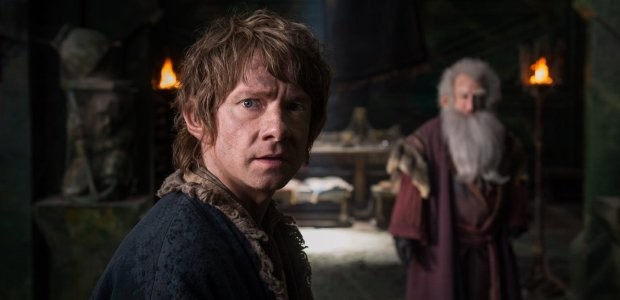Thirteen years since we first saw Peter Jackson’s hobbits walk across the cinema screen, his epic six-movie saga on Middleearth comes to an end with the last of the Hobbit films. The Hobbit: The Battle of the Five Armies, in many ways, is Jackson’s most sincere Hobbit film – it is neither an unnecessary indulgence, fan-service nor award-baiting. It is an entertaining and energetic finale that stays faithful to the one thing that matters most: telling a great story. The relatively shorter runtime, a different format of events (there is no journey) and the uninterrupted pacing undoubtedly make it the best of this trilogy.
The movie picks up from the cliffhanger ending of The Desolation of Smaug, with the dragon on its way to burn down Laketown. At the Lonely Mountain, now having claimed his throne and the treasures of Erebor, Thorin Oakenshield (Richard Armitage) seals himself in with the rest of the dwarves and one hobbit, refusing to help the displaced Men or make a deal with the Elves. But as the armies of Orcs and Goblins converge on the mountain, Bilbo Baggins (Martin Freeman) must work to unite Dwarves, Men and Elves, despite their differences, in a great battle of the five armies.
As with all of Jackson’s Middleearth films, The Battle of the Five Armies starts with a pre-credit sequence that takes you right into the thick of things. This time, Jackson gives us the most breathtaking opening of this trilogy; on par with the Gandalf-Balrog opening of The Lord of the Rings: The Two Towers. Smaug is a dragon of few words this time, focusing on devastating Laketown while the only one to stand against the nefarious beast is Bard the bowman, played by a confident Luke Evans. Post title, once the story moves to the Lonely Mountain, it is a matter of time before the huge and relentless battle starts that lasts most of the movie’s 144 minute running time.
Though J. R. R. Tolkien’s small children’s book has been stretched to a trilogy, the decision by the filmmakers to condense much of the tale into the first two films and leave a seemingly one-act finale for a rousing closure does wonders for this film. Peter Jackson pulls out all stops in a brutal (but non-bloody) battle, yet the proceedings never get monotonous. The battle strategies and details envisioned by Jackson’s team are as fascinating as those witnessed earlier in the battles of Helm’s Deep (The Two Towers) and Pelennor Fields (Return of the King). The troop formations, the use of battle-trolls & other fantasy monsters and exploiting other war devices gives the production team lots of room to improvise, especially considering J. R. R. Tolkien did not have any description of the battle in his book.
The non-existence of mini-adventures as present in the previous two films also allows The Battle of the Five Armies to explore a few characters better, particularly Thorin. His descent into obsession and madness was hinted at previously, but this movie plunges him into it. And while Ian McKellen’s Gandalf continues to shine as the saga’s strongest character and best performance, Cate Blanchett’s Galadriel gets to flaunt what it is about her character that others in Middleearth love and fear. Lee Pace also gets to add dimension to the character of Thranduil. Martin Freeman’s Bilbo Baggins, though, is mostly a supporting character in the film, considering there is very little that a lone hobbit can do when there are five races of warriors battling all around him.
One of the smaller delights of the film is its short and delightful ending that ties it to the beginning of The Fellowship of the Ring. Fittingly so, since even though The Hobbit trilogy doesn’t quite reach the dazzling heights of The Lord of the Rings trilogy, The Battle of the Five Armies brings it close. With Peter Jackson’s monumental six-movie thirteen-year saga complete, the sheer ambition of which may have sounded too audacious to accomplish at one point, the entire cast and crew of the series must be applauded for what is undeniably the greatest cinema experience in the fantasy genre ever.
Rating: 




